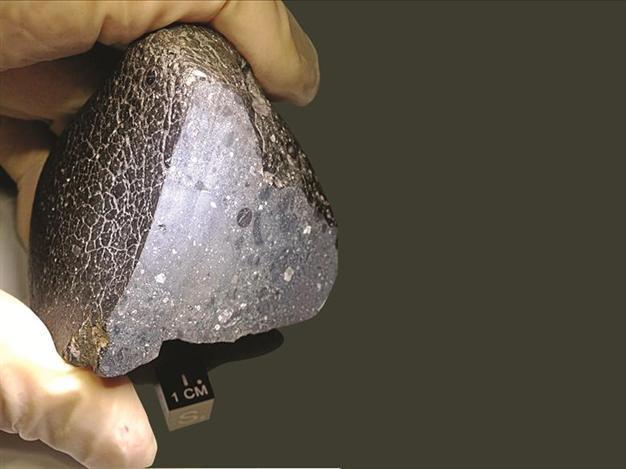‘Black Beauty’ meteorite could yield Martian secrets
WASHINGTON - Agence France-Presse

A fist-sized meteorite nicknamed ‘Black Beauty’ could unlock vital clues to the evolution of Mars.
AFP photo
A Martian meteorite containing 10 times more water than average could unlock clues to the Red Planet’s evolution from a warm, wet past to its current cold and dry state, scientists said Jan. 3.
Unlike most Martian meteorites, NWA 7034, a dark, fist-sized rock that landed in the Sahara Desert in 2011, is thought to be from the planet’s surface, not deeper inside, and to date from a crucial time in its evolution.
“Many scientists think that Mars was warm and wet in its early history, but the planet’s climate changed over time,”lead author Carl Agee, whose study was published in the US journal “Science Express,” told space.com.
Scientists believe NWA 7034 was formed from lava from a volcanic eruption on Mars around 2.1 billion years ago that cooled and hardened on the surface of the planet, possibly with the help of water.
“Perhaps most exciting is that the high water content could mean there was an interaction of the rocks with surface water either from volcanic magma, or from fluids from impacting comets during that time,” co-author Andrew Steele said.
It is the richest Martian meteorite geochemically and further analyses are bound to unleash more surprises.” It took scientists several months to ascertain that the meteorite was indeed dislodged from Mars and not a space rock from the asteroid belt or from another planet.
“The chemistry is consistent with a surface origin and an interaction with the Martian atmosphere,” said Agee.
The abundance of water molecules in the rock, about 6,000 parts per million, 10 times more than other known meteorites , suggest water activity persisted on the Martian surface at that time, known as the Amazonian epoch.
